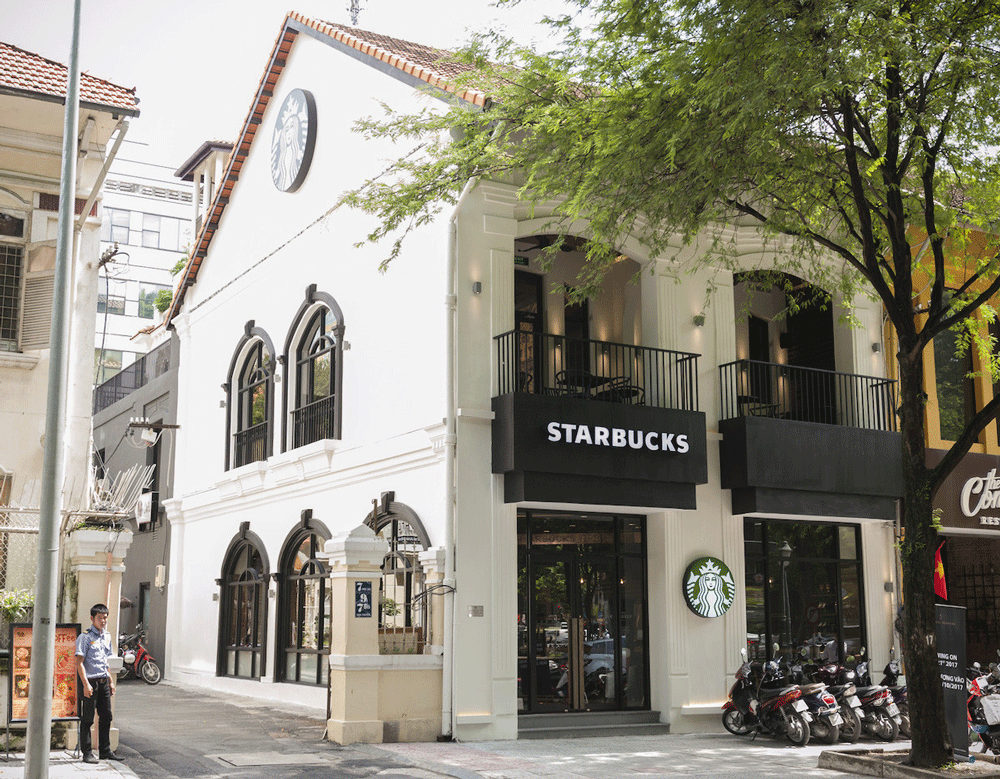
Starbucks Vietnam will close its Starbucks Reserve Han Thuyen store on August 26th after seven years of operation. This was the first and only premium Starbucks Reserve store in Ho Chi Minh City.
Previously, in 2021, Starbucks Vietnam also closed its prime location at the Rex Hotel, near Nguyen Hue Walking Street. With this latest closure, only one Reserve store remains in Vietnam, located on Nha Tho Street in Hanoi.
The decision to close Starbucks Reserve Han Thuyen has surprised and saddened many, as it was a popular destination, loved by many for its "best coffee in Saigon," prime location, and beautiful views. Most comments on Starbucks Vietnam's official Facebook page express regret over the closure.
Typically, a major brand like Starbucks signs a lease for 5 to 10 years. Starbucks Reserve Han Thuyen had been operating for 7 years. The building it occupied has a frontage of 8.5 meters and a depth of 25 meters, with a total area of about 210 square meters, comprising one ground floor and two upper floors. It boasts a prime location opposite 30/4 Park and close to Notre-Dame Cathedral Basilica of Saigon.
Starbucks Vietnam did not disclose the specific reason for the closure but mentioned that it had "carefully considered many factors" and promised to open a new Reserve branch at a different location, offering better experiences for customers.
Information from real estate brokers indicates that renting a similar space would now cost around 750 million VND per month, nearly double the rate from seven years ago.
This is a substantial amount - 25 million VND per day in rent, or 9 billion VND annually, not including labor costs and many other expenses.
Considering that each drink at Starbucks Reserve Han Thuyen costs between 65,000 and 200,000 VND, the store would need to sell 250 cups per day just to cover the rent. Factoring in additional costs, the store would need to sell hundreds more to break even or turn a profit.
Despite its prime location and strong customer base, Starbucks Reserve Han Thuyen was considered modest compared to other premium Reserve stores in various countries.
Moreover, customers often complained about the difficulty of finding parking due to the store's prime location. This may have contributed to the store not being as consistently busy as other large coffee chains nearby.
It's likely that the revenue generated was not enough to cover the high rental costs.
For some famous brands like Starbucks, flagship stores in prime locations, such as Starbucks Reserve Han Thuyen, are deemed essential for maintaining the brand's prestige.
Losing money at a flagship location—primarily for brand positioning—is acceptable if the chain as a whole remains profitable.
Moreover, rising rental prices in prime locations over time is inevitable. While commercial spaces elsewhere might see reduced rents as online shopping becomes more popular, rents in prime locations continue to rise rapidly.
The increase in rental prices over time is understandable, especially given the continuously rising real estate prices. Moreover, prime locations are scarce. The value of properties in such "diamond" locations has continued to soar, even during periods of market stagnation. This trend is evident in major cities worldwide, including the UK, the US, and China.
According to experts on CNBC, China's ultra-wealthy are increasingly investing in ultra-luxury real estate, moving away from stocks and mainstream real estate investments in recent years.
For example, in China, luxury properties in Shanghai are considered valuable assets, allowing the ultra-wealthy to store wealth while maintaining high liquidity, making them easy to resell.
In Vietnam, real estate in prime locations has also seen significant increases. High-end apartments in Hoan Kiem District (Hanoi) are being sold for 1-2 billion VND per square meter. Land in prime locations has far surpassed the 1 billion VND mark. Even villas in prime locations outside Hanoi’s Ring Road 3 command prices of up to 1 billion VND per square meter.
According to real estate listings, land on Han Thuyen Street in Ho Chi Minh City is currently priced at 1-3 billion VND per square meter. With an area of approximately 210 square meters, if sold for around 250 billion VND, the owner could earn 15-20 billion VND per year in interest by depositing the amount in a bank, equivalent to 1.25-1.6 billion VND per month.
Thus, a rental price of 750 million VND per month is not surprising. It is likely that rental prices could continue to rise in the future.
While Starbucks Vietnam did not provide a specific reason for closing the Han Thuyen store, many speculate that it could be due to the lease expiring, a significant rent increase, or a change in ownership, given the high demand for ultra-luxury real estate in Vietnam.
High rent could be a factor, but there may be other reasons as well. One thing is clear: Ho Chi Minh City is expanding rapidly, with multiple centers, not just in District 1. As a result, there are still many prime locations available for multi-billion VND leases.
Manh Ha